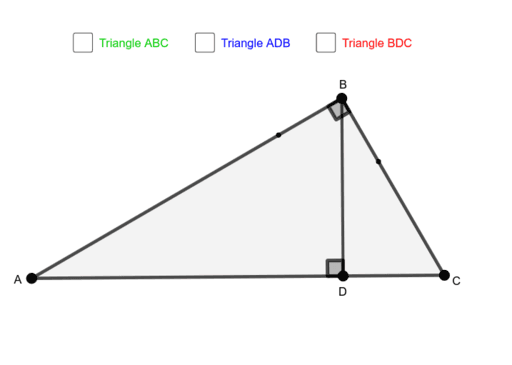


Let us know if you have any other suggestions! Formulas and Calculations for a right triangle: Once we know sides a, b, and c we can calculate the perimeter = P, the semiperimeter = s, the area = K, and the altitudes: For example, if we know a and b we can calculate c using the Pythagorean Theorem. In our calculations for a right triangle we only consider 2 known sides to calculate the other 7 unknowns. This formula is known as the Pythagorean Theorem. In the case of a right triangle a 2 + b 2 = c 2. Triangle where 1 angle is equal to 90 degrees. Remember on climbs VS mode is a big no… unless at 3, 2 and 1 to go ONLY IF your VS exceeds 3000, 20fpm.*Length units are for your reference only since the value of the resulting lengths will always be the same no matter what the units are. We’ll slow down and use VS to avoid getting even lower. So if they’re vectoring us and we’ll end up flying more miles than we planed for, then we’d be low. We want to keep the airplane descending on CDAs (or the airline could pay a fine). The only time we will use VS is to fine tune the last stages of descent to catch the glideslope when vectored. The airplane will catch the original path. Once we get “free rate” by ATC we will again use VS-500 or VS-1000 or simply go back to VNAV. We wouldn’t use LVL CHG or VNAV SPD descent in that case because it would result in a descent rate higher than we want to (we don’t like to descend early… German ATC). ATC doesn’t like it when we do this, so shortly after they will say something like “Descend FLXXX 1500fpm or greater”. In high levels we will likely only use VS-500fpm when we’re instructed to descend a lot earlier than TOD. If the winds are so different that you end up being high, simply type in a new speed in the descent page.
ALTITUDE GEOMETRY CALCULATOR UPDATE
If for any reason (winds), the geometry of the path does not result in the desired speed, you can update the path by redirecting yourself to the current point you’re flying to. This path is calculated at the ECON or the selected speed you can see in the descent page in the FMC. When it does, it will command IDLE and descend along the path. The airplane will start descending at 1000fpm until it catches the VNAV PTH. When this happens, we select the cleared level in the MCP and while still in VNAV, we will press ALT INTV (or Descend Now in the FMC). What normally happens is that we will be directed to descent a bit earlier than TOD. If you’re not speed restricted, you should just descend at a faster speed before going for the speedbrakes. The only reason to use them is when you’re speed restricted and high. In fact, it’s very “un-elegant” to do so. It’s very unlikely that speedbrakes will be used above FL100 in real operations. If you do, then you’re doing something wrong. We can use all modes during descent but any RL pilot will always choose the best level of automation possible, so 90% of the time we will descend in VNAV PTH. The 737-700 is a beast when it comes to power/weight ratio so calculating for the proprer T/O N1 is key - especially with low(er) weights. There is a limitation of 20 degrees maximum pitch for takeoff - I believe it comes from Boeing since all the SOPs I’ve flown had it - but I’m pretty sure it is not built in in the autoflight logic so you can encounter higher F/D pitch commands. You can also end up in the same situation using bad rotation technique on takeoff or of course with sudden headwind component increase on departure. If you have more thrust than you need for your actual takeoff weight this will result in high pitch commands in order to maintain that speed. The flight computer will aim for around V2+20 for (first and) second segment climb regardless of the pitch mode. In this case though it’s not the VNAV to blame. Just because you’re told by someone that they - probably by their company SOP - don’t use it doesn’t mean that nobody uses it. Real world pilots DO use VNAV a lot for departure in real life.


 0 kommentar(er)
0 kommentar(er)
